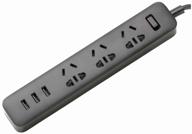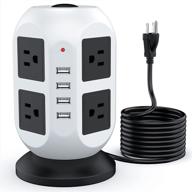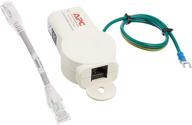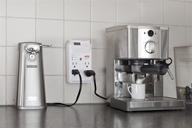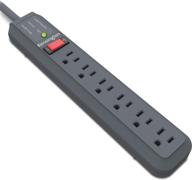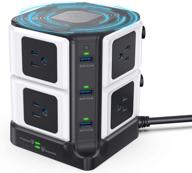Protect Your Gadgets from Power Surges
Power surges can cause severe damage to your sensitive electronics and appliances. A power surge is a sudden and unwanted increase in voltage that can overload and fry the delicate circuitry in your gadgets. Surge protectors are an essential way to safeguard your investment in home electronics against such hazards.
What Causes Power Surges?
Some common causes of power surges include:
- Lightning strikes that affect power lines
- Faults in the electrical wiring system
- Malfunctioning appliances that feed voltage back into the system
- Tree branches touching power lines
- Utility equipment failure
The Damage Power Surges Can Inflict
Power surges can cause a number of problems for your electronic equipment:
- Permanent damage to internal circuitry and components
- Degradation and shortening of the equipment's lifespan
- Damage to data, software, and firmware
- Performance issues, crashes, and unpredictable behavior
This damage accrues every time a power surge strikes. The costs of continually replacing and repairing electronics can really add up.
How Surge Protectors Safeguard Your Gear
A surge protector provides a buffer between the wall outlet and your gadgets. It blocks excess voltage from passing through to your devices. There are a few ways different types of surge protectors work to accomplish this:
- MOVs (Metal Oxide Varistors) - These components divert extra electricity to the ground line. This prevents voltage spikes from reaching your devices.
- Internal fuses - If power flow exceeds safe levels, fuses burn out to break the connection. This stops the surge from getting through.
- Inductors - These components absorb excess energy and clamp the voltage to a safe level.
- Capacitors - Capacitors charge up to block power surges.
Key Features to Look for in Surge Protectors
Here are some key factors to consider when shopping for a surge protector:
| Feature | What to Look For |
|---|---|
| Joule Rating | Higher numbers indicate better protection. Look for at least 1800-3000 joules. |
| Protection modes | Both L-N and L-G protection modes are ideal for defending all wired connections. |
| Clamping voltage | 330V or less is optimal. |
| Response time | Select models rated for nanosecond response times. |
| Indicator light | An LED or audible alarm that alerts you if protection has burned out. |
| UL certification | Choose ETL/UL certified surge protectors for assured quality. |
Investing in a high-quality surge protector from a reliable brand is important to fully safeguard your expensive gear against the threat of power surges.
Similar products
Safeguard Your Electronics with a Quality Surge Protector
With the multitude of sensitive and expensive electronics in homes today, a power surge can inflict hundreds or even thousands of dollars of damage in an instant. From computers, TVs and game consoles to small appliances like a refrigerator or AC unit, a voltage spike can burn out delicate internal components and lead to premature failure. Investing in a quality surge protector is a simple way to provide indispensable protection.
How Surges Damage Electronics
Power surges deliver an abrupt flood of excess electric current into your devices. This can overwhelm and fry capacitors, integrated circuits, and other parts not designed to handle such a boost in power. The effects may not always be instant, but can degrade performance over time. Some examples of surge-related issues include:
- Display screens flickering, discoloration or distortion
- Frequent software crashes and hardware freezing
- Unexplained reboots and operation errors
- Permanent damage to data on hard drives
- Shortened equipment lifespan and premature failure
Key Attributes of a Good Surge Protector
Here are some key features to evaluate when selecting a surge protector to safeguard your system:
- High joule rating - This indicates how much energy it can absorb before failure. Look for at least 1800-3000 joules.
- Clamping voltage - Maximum voltage let through; 330V or less is ideal.
- Protection modes - L-N (line to neutral) and L-G (line to ground) modes provide optimal coverage.
- Response time - The faster the reaction time, the better. Nanosecond speeds are best.
- UL certification - ETL/UL certification ensures electrical safety standards.
- Indicator light - An LED that alerts you if protection has burned out.
Why You Shouldn't Rely on a Power Strip
Many people mistakenly believe that a basic power strip with a fuse provides adequate surge security. However, there is a big difference between a power strip and a true surge protector. Power strips are designed simply to expand your number of available outlets. They may stop extremely high current flow, but do not offer response times fast enough to safeguard electronics from a surge.
Getting the Right Surge Protection for Your Needs
The level of surge protection you need depends on the value of the electronics you are safeguarding and how prone they are to surges. Here are some examples:
- For protecting a home theater system worth thousands of dollars, invest in a heavy duty surge protector rated over 3000 joules.
- For a bedroom setup of modestly priced computer, TV and gaming console, a standard protector of 1800-2000 joules should suffice.
- For small kitchen appliances like a refrigerator or microwave oven, a less expensive option around 700-1000 joules will do the job.
Spending a bit more for a quality surge protector from a leading brand is worthwhile when it comes to protecting your expensive investments. Do some research to find the best rated options that fit your needs and budget.
Added Features to Look For
Some other useful features to consider when selecting a surge protector include:
- Sufficient number of outlets to plug in all your devices.
- Right cord length to reach distant outlet without extension.
- Rugged housing that can withstand being moved around.
- On/off power switch for connected devices.
- USB charging ports for convenient access.
- Noise filtration to reduce line interference.
- Automatic shutoff if protector gets too hot.
- Mounting slots to neatly organize cords.
Investing in a surge protector that combines solid technical specs with added functionality can provide complete protection for your electronics setup. Safeguard your costly gear against the havoc a power surge can wreak.
Choosing the Right Surge Protection for Your Needs
With a wide range of surge protectors available, making the right choice to suit your specific devices and installation requires understanding your key options. The level of protection, features and price can vary considerably between models. By evaluating your risk factors, equipment value and features needed, you can zero in on the ideal surge protection solution.
Assess Your Risk Level
Some considerations when gauging your surge risk include:- How frequent lightning strikes occur in your area.
- Proximity to problematic power grid equipment that can cause surges.
- Elevated exposure to electrical faults from aging or damaged wiring.
- Shared electrical systems in an apartment building or office.
- Heavy use of high-draw appliances that strain your electrical system.
- Presence of sensitive electronics and irreplaceable data.
Higher risk requires more robust surge protection.
Evaluate the Equipment Value
The value of the electronics you want to protect is a major factor. For example:
- For professional audio/video gear or gaming PCs worth thousands, invest in advanced surge protection.
- For moderately pricey home office setups, look for mid-range rated units.
- For less expensive smart home gadgets or appliances, budget-friendly options should suffice.
Determine the Right Joule Rating
The joule rating indicates how much energy the protector can absorb before failure. For electronics with the following values, these joule ratings are recommended:
| Electronics Value | Minimum Joule Rating |
|---|---|
| Up to $500 | 700-900 joules |
| $500 to $1,000 | 900-1200 joules |
| $1,000 to $2,000 | 1500-2000 joules |
| Over $2,000 | 3000+ joules |
Match Surge Protection Modes
Devices like satellite receivers may need L-N (line to neutral) protection, while systems like home theaters should have both L-N and L-G (line to ground) modes. Match the protector to the equipment.
Consider Key Specifications
Faster reaction times, lower clamping voltages and UL certification provide better protection:
- Response time - Nanosecond reaction speeds are optimal.
- Clamping voltage - 330V or less prevents voltage spikes from passing through.
- UL certification - Guarantees the protector meets safety standards.
Analyze Connectivity Requirements
Evaluate how many outlets you need and if connectivity options like coax or Ethernet protection are required based on your devices:
- Simple setups may only need a basic power strip-style protector.
- Units with more outlets provide flexibility for expansive systems.
- Including coax and Ethernet will keep cable modems and networking gear safer.
Consider Added Convenience Features
Some extra useful features to look for include:- Rotating outlet orientation to accommodate chunky plugs.
- Right angle plugs for hard to reach electrical outlets.
- Extended or removable cord length to position protector appropriately.
- Lighted outlets to easily plug and unplug devices.
- USB ports for charging mobile devices.
- Rugged housing that can be moved frequently if needed.
Don't Overspend on More Protection Than Needed
It's important to avoid "over-protection" by purchasing a much higher joule rated or specced out protector than your equipment requires. Match the surge protector capabilities to your gear and risk level.
Taking the time to carefully evaluate your surge protection needs will ensure you choose the right solution for your situation, at the best value. Safeguard your electronics with a tailored approach.
Not All Surge Protectors Are Created Equal
With the wide range of surge protector models available from different manufacturers, it's important to understand that not all options provide the same level of protection. Cheaper units may not safeguard electronics from damaging power surges as well as higher quality ones. By learning key differences in features, performance and standards, you can make an informed choice.
Key Variances in Surge Protection Capabilities
Some important technical specifications that can vary substantially between surge protector models include:
- Joule rating - This indicates the maximum amount of energy it can absorb. A higher joule rating means better surge protection.
- Clamping voltage - This is the highest voltage allowed through before protection kicks in. Lower clamping voltage is better.
- Response time - Faster reaction times of Nano-seconds offer optimal protection.
Cheaper surge protectors often have much lower joule ratings and higher clamping voltages than heavy duty models designed to handle large surges.
Fewer Protected Modes
Higher end surge protectors will safeguard from surge threats through all avenues, while cheaper ones may only protect from one. Comprehensive options guard against:
- Line-to-neutral surges
- Line-to-ground surges
- Surges traveling through coax cable connections
- Surges impacting ethernet network cables
More protected modes means more complete coverage.
No UL Certification
Leading safety organizations like Underwriters Laboratories (UL) test and certify that surge protectors meet optimal design, performance and safety standards. Quality surge protectors are ETL or UL certified, while cheaper models typically are not.
Fewer Safety Features
Reliable surge protectors include key safety features like:- Fireproof MOVs that prevent hazardous overheating
- Thermal fuses that disconnect protector if it gets too hot
- Audible alarm that signals if protector has stopped functioning
- Internal safety circuitry to prevent shocked users
Less expensive, inferior surge protectors lack such safeguards.
Lower Quality Components
Brand name surge protectors use heavy duty internal components engineered for maximum protection, like:
- High quality MOVs that divert thousands of joules
- Large EMI/RFI filters to reduce line noise
- Copper wound inductors to absorb excess current
No-name surge protectors often skimp on component quality and performance.
Fewer Useful Features
Better surge protectors come packed with extras like:
- Enough widely spaced outlets to plug in all your devices
- Flexible rotating outlets to accommodate chunky plugs
- USB charging ports for mobile devices
- Coax and ethernet jacks for expanded protection
- Right angle plugs for hard to reach outlets
Basic surge protectors lack features that add functionality and convenience.
Evaluating key technical specifications, safety features, component quality and overall functionality ensures you select a surge protector that provides the level of protection your valuable electronics require. All surge protectors are definitely not created equal!
Surge Protectors - A Wise Investment to Save on Costly Repairs
With the ever-rising costs of maintaining and replacing home electronics, investing in quality surge protection pays for itself in the long run by preventing expensive damage. For a relatively low upfront cost, you can save hundreds or even thousands of dollars down the road on repairs or replacing destroyed devices.
Typical Costs of Surge Damage
Power surges can wreak havoc on expensive equipment like televisions, computers, game systems and appliances. Here are some examples of typical repair or replacement costs:
- TV - $200 to $2,000+ depending on size, features
- Desktop computer - $500 to $1,500+ depending on specs
- Laptop - $400 to $1,200+ based on model
- Game console - $300 to $500 to replace
- Refrigerator - $500 to $2,000+ depending on size and features
- Microwave oven - $200 to $700 for a comparable model
Just one surge incident can lead to hundreds of dollars in damages. Over time the costs really add up.
Typical Cost of Quality Surge Protectors
Now compare the repair and replacement costs above to the price to buy a good quality surge protector:
- Simple power strip style - $20 to $50
- Standard home theater protector - $30 to $80
- Heavy duty industrial grade - $100 to $200
You can see that an investment in surge protection now can save you a lot more money later on.
Added Benefits of Surge Protectors
Beyond protecting from surges, good surge protectors provide other useful benefits:
- Prevent equipment degradation that shortens lifespan
- Keep components running properly longer with less repairs
- Reduce line noise that can disrupt signal quality
- Deliver steady consistent power levels to electronics
- Include extra USB charging ports for convenience
- Offer consolidated organization of gadgets and cords
You gain all these advantages in addition to surge protection.
Peace of Mind Protection
Rather than living in fear of receiving an electrically-induced repair bill down the road, investing in surge protectors lets you relax knowing your valuables are shielded. You'll have peace of mind being able to:
- Run appliances without worrying about premature failure
- Use computers without fretting over potential data loss
- Enjoy home entertainment without tension of sudden shutdowns
- Operate delicate electronics freely without stressing over surges
Good surge protection offers security and reduces stress.
Features to Look for in Surge Protectors
Key features to consider when selecting a quality surge protector include:
- High joule rating based on your devices' value
- Added L-G line to ground protection
- UL certification to ensure safety and performance
- Indicator light showing status
- Enough outlets and spacing to plug items in
Investing in solid surge protection that includes the right specifications and features for your home or office use is a wise choice that can save you money and give you peace of mind.
Top products in ⚡️ Surge Protectors
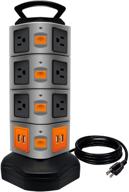

11 Review

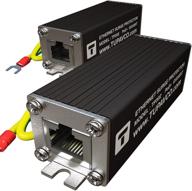

11 Review

Getting the Most Out of Your Surge Protector
A quality surge protector is an essential investment to safeguard your valuable electronics from hazardous power surges. But there are some important steps you should take to ensure you are getting the full benefits from your surge protector and that it is able to optimally protect your devices.
Choose the Right Location
Where you place your surge protector can impact its effectiveness. Some tips on location:
- Avoid locations where the protector can be accidentally disconnected or damaged such as high foot traffic areas.
- Position it close enough to electronics so power cords are not excessively long.
- Do not coil up excess cord which can negate some of the protection benefits.
- Ensure proper ventilation around the protector to prevent overheating.
Only Connect Devices That Need Protection
Do not plug in secondary surge protectors or large appliances like refrigerators into your main protector. This can overburden the protector’s circuits. Only connect electronics like computers, TVs and game consoles that depend on the surge protection.
Inspect Your Surge Protector Regularly
Check your surge protector once a month for any signs of problems like:
- Excessively warm or melted plugs indicating overheating
- The “grounded” light is not illuminated showing loss of ground connection
- The “protected” light is out indicating loss of protection
- Cracked or damaged outlets
Replace the unit immediately if you notice any problematic signs.
Replace Your Protector Periodically
Surge protectors can lose their effectiveness over time after absorbing multiple power surges. It is recommended to replace your protector every 2-3 years, or when its indicator lights show it is no longer protecting.
Use Good Quality Power Cords
Lower quality power cords can reduce the overall protection capabilities. Features to look for include:
- Minimum 14 gauge cord thickness
- UL/ETL certification tag
- Tight fitting plugs without gaps or loose parts
- No fraying, damage or patching on the cord
Add Extra Protection Layers
For expensive, sensitive electronics consider adding additional surge protection layers like:
- Uninterruptable power supply (UPS) devices with built-in battery backup
- Point-of-use surge protectors at the equipment location
- Whole house surge protectors at your main electrical panel
This provides full coverage from all surge pathways.
Pay a Bit More for Quality
Higher priced surge protectors from reputable firms often provide better protection and durability. Key indicators of quality include:
- Higher joule ratings of 3000+
- Added L-G line to ground protection
- UL 1449 certification
- Durable metal housing
- Name brand trusted components
The extra cost is worth it for enhanced protection and reliability.
By selecting the optimal location, using good quality power cords, replacing it periodically, and choosing a robust surge protector, you can maximize the protection for your delicate electronics.
Surge Protection 101 - What You Need to Know
With the steady rise in damaging power surges, investing in proper surge protection is critical for safeguarding valuable electronics. But with so many protector options and specifications, knowing what to look for can be confusing. Here is an overview of the basics you need to understand about choosing and using surge protection.
What Is a Surge?
A surge, or transient voltage, is a sudden and unwanted increase in voltage significantly above the standard 120V level. This surge of excess electric current can be caused by:
- Lightning strikes
- Faults in power lines or grid equipment
- Electrical device malfunctions
- Damaged wiring in a building
How Surges Damage Electronics
Electronics contain delicate circuitry designed for standard voltages. When a surge strikes, it overwhelms these components causing internal damage like:
- Fried capacitors and transistors
- Burned out integrated circuits
- Shorted internal wiring
- Cracked chip boards
This can lead to immediate failure or degraded performance over time.
Surge Protector Protection Technologies
Surge protectors use various methods to divert excess energy and prevent voltage spikes from reaching your devices. These include:
- MOVs - Metal oxide varistors that short to ground
- Thermal fusing - Fuse burns out stopping current flow
- Capacitors - Store and dissipate excess energy
- Inductors - Absorb excess current and choke voltage
Key Surge Protection Specifications
Higher performance specifications indicate better protection. Key numbers to look for include:
- Joule rating: 1300+ for basic protection; 3000+ for whole house
- Clamping voltage: 330V or less
- Response time: 1 nanosecond or less
Surge Protection Modes
More comprehensive protection requires both L-N (line to neutral) and L-G (line to ground) modes to cover all wired connections.
Added Features
Useful extras to have include:
- Sufficient number of widely spaced outlets
- Rotating outlets to fit chunky plugs
- Right angle plugs for hard to reach spaces
- Phone/cable/Ethernet jacks
- USB charging ports
- Cord management slots
When to Replace Your Protector
Surge protectors wear out over time. Replace when:
- The protection indicator light turns off
- It has absorbed multiple surges
- Every 2-3 years as preventative maintenance
Investing in quality surge protection tailored to your needs and situation provides peace of mind against the risk of power surges damaging your valuable electronics and appliances.
What is the Benefit of Amazon Prime when Buying Surge Protectors?
When looking to purchase surge protectors for your home or office devices, the benefits included with an Amazon Prime membership can provide real value and convenience.
Free One-Day Shipping
One of the best perks of Amazon Prime is free one-day shipping on millions of products. This means if you need to quickly replace a failed or inadequate surge protector, you can order a new one and receive it the very next day at no additional shipping cost with Prime.
Free Two-Day Shipping
If you want to take a bit more time to evaluate different surge protector options before purchasing, you can benefit from Prime's free two-day shipping on most items. This provides quick delivery so you can get your new surge protector set up right away.
Free Standard Shipping
Even if you don't need the fastest shipping, Prime members enjoy free standard shipping that gets items delivered for free within 5-8 business days. This is convenient if you plan in advance before your current surge protector fails or becomes inadequate.
Easy Returns
If you order a surge protector and then realize it doesn't fit your needs or space requirements, Amazon Prime makes returns easy with free return pickup or drop-offs. This allows you to exchange for a different model that better suits your electronics setup.
Lightning Deals
Amazon Prime members get 30 minute early access to many Lightning Deals that offer big discounts on surge protectors for a short time. This allows you to grab quality surge protectors when they are significantly discounted beyond regular sale prices.
Prime-Exclusive Deals
In addition to early Lightning Deal access, Prime members also get exclusive access to special sales and coupons on surge protectors that are not available to non-Prime shoppers. These can offer great savings when buying surge protection.
Overall, an Amazon Prime membership provides numerous benefits like fast free shipping and exclusive access to deals that can optimize the buying experience when purchasing needed surge protectors for your electronics.
What Are The Benefits Of Using Surge Protectors?
Using surge protectors has several benefits, including:
- Protection against power surges: Surge protectors are designed to protect your electronics from power surges, which can occur during storms or due to other factors. They redirect unexpected increases in voltage away from delicate equipment, preventing damage to your devices.
- Longer lifespan for electronics: Even without a storm, smaller, less noticeable power spikes can shorten the life of your devices. Surge protectors can help prevent this by diverting and suppressing extra voltage caused by power surges, thus keeping your appliances safe.
- Preventing electrical fires: Surge protectors can also prevent electrical fires by diverting any unusually high surges, diverting the energy and avoiding damages such as a fire.
- Protecting high-tech gadgets: Surge protectors can protect your high-tech gadgets from power surges, which can cause permanent damage to your devices.
- Transient surges protection: Surge protectors can also provide transient surges protection, which is a type of protection that helps to prevent damage to your devices from short-term surges.
- Cost-effective: Surge protectors are a cost-effective way to protect your electronics from power surges. They are relatively inexpensive and can save you money in the long run by preventing damage to your devices.
- Easy to use: Surge protectors are easy to use and can be plugged into any outlet. They come in a variety of sizes and styles, making it easy to find one that fits your needs.
What Are The Differences Between A Surge Protector And A Power Strip?
The main differences between a surge protector and a power strip are:
Surge Protectors:
Power Strips:







